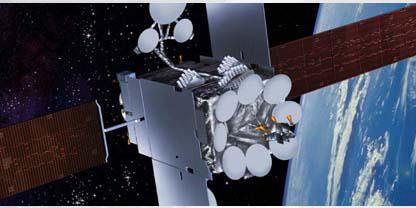Next-Gen Satellite to Deliver High-Speed Mobile Wideband
The mobile craze and the shift to constant connectivity—even if it means paying steep prices for slow Internet speeds—have paid off for both airlines offering onboard Wi-Fi hot spots and satellite communications providers.
Commercial aviation has been the fastest-growing industry service area for the mobile satellite services operator giant Inmarsat. “The commercial aviation market has learned what the U.S. government has known all along: They want as much connectivity in the air as they want on the ground,” says Rebecca Cowen-Hirsch, senior vice president for government policy, strategy and outreach at Inmarsat Incorporated. She credits the market growth to consumers pushing for change as much as the airline industry striving for enhanced data in cockpits.
Five years ago, Inmarsat embarked on a $1.6 billion effort to heighten communication capabilities and provide a single global wideband service that users could access on land, at sea and in the air with its high-speed Ka-band network of satellites called Global Xpress.
The first two satellites successfully launched, but the much-anticipated launch of the third satellite has been delayed following the failure in May of the Khrunichev-International Launch Services Russian Proton rocket as it dispatched a Mexican communications satellite. Inmarsat had planned to launch Inmarsat-5 F3 from Kazakhstan early in June. “We are quite keen to have that satellite launched,” Cowen-Hirsch says.
While designed as a three-satellite package for full, globally available services, customers in certain regions already can tap into the offerings provided by Inmarsat-5 F1, which became operational a year ago this month. “Right now, we have a variety of government users in all domains—land, sea and, of course, airborne—taking advantage of the incredible capabilities in the data rate as well as the coverage,” Cowen-Hirsch says.
The first satellite, launched in December 2013, is positioned over the Indian Ocean. The second, launched in February, is scheduled to reach its final destination toward the end of July and will be positioned over the Atlantic Ocean. Inmarstat-5 F3 is slated to service the Pacific region. The provider plans to launch Inmarsat-5 F4, designed as an in-orbit spare to the Global Xpress constellation, in late 2016 aboard a SpaceX system. Leaders have yet to decide whether to launch a fifth satellite in the series, she said.
“The Global Xpress system is based on the concept that the three baseline satellites are identical, so that they are fully redundant to one another and fully interoperable,” Cowen-Hirsch explains. Once fully operational, an aircraft flying around the world would have continuous, high-speed coverage, no matter which of the three satellites provides the service.
Inmarsat added to L-band frequencies new Ka-band specifically for the Global Xpress endeavor. With Global Xpress, the company is adding high capacity to high availability to complement its worldwide L-band network. Inmarsat plans to launch its next generation L-band satellite constellation with its future Inmarsat-6 line, she states. The idea is to be “backward compatible” and replenish on a rotational basis the company’s “workhorse” Inmarsat-4 satellites, the predecessors to the 6s. However, the next generation of systems might carry additional payloads and capabilities to augment the Global Xpress constellation. At least the first of the Inmarsat-6 satellites is contracted for a SpaceX launch.
“Right now, we spend about $500 million on an annual basis on research and development—and not just R&D conceptually—but actually investing in the enhancement capabilities in the network as well as new technologies,” Cowen-Hirsch says.
Boeing Satellite Systems International is building the Global Xpress constellation at its El Segundo, California, facility on the same manufacturing line as the Wideband Global SATCOM (WGS) for the U.S. government, providing “commonality in the electronics and the characteristics” between the commercial and military systems, Cowen-Hirsch offers.
A major push behind the Global Xpress initiative, too, is to allow customers to link to the satellites using smaller terminals, an improvement particularly needed by expeditionary military forces.
The U.S. military’s withdrawal of combat forces from Afghanistan made a “fairly sizeable” impact on Inmarsat’s revenue base, but the provider recouped some from the boost in aviation and maritime customers.





Comments